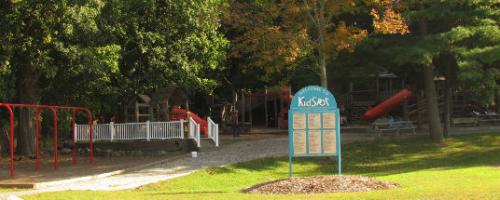Toy Safety
Select Children's Toys with Safety in Mind
According to the Home Safety Council's State of Home Safety in America™ (2002), emergency departments reported nearly 170,000 visits due to injuries related to toys at home in a single year. To help reduce the risk of serious injury, always follow safety guidelines when choosing toys for children. Before choosing toys and games for little ones on your shopping list, consider each child's age, skills and abilities. Toys that are beyond your child's age and developmental ability can be unsafe for him or her, so select toys that are appropriate rather than those children can "grow into". Consider the following guidelines for selecting toys for your child:
- When purchasing toys for infants and toddlers, select toys, puzzles, rattles and teething toys that are too large to be swallowed.
- Read the labels and other packaging information and base your selection on age recommendations.
- Look for "washable/hygienic materials" or similar labeling on stuffed toys and dolls and "flame retardant/flame resistant" labeling on fabric products and costumes.
- Read assembly and use instructions to ensure the toy is appropriate for the child you have in mind.
- If you purchase stuffed toys, look for those that are rated safe for infants, which will ensure specific safety features, such as secure attachment of the stuffed toys' eyes and noses and non-removable squeaking mechanisms.
- Avoid toys with long strings or cords, which could entangle and strangle a child.
- The Home Safety Council recommends against using latex balloons in homes with young children, as they can swallow an unfilled or broken balloon and suffocate.
- Remove and discard plastic wrapping and bags as soon as the toy is opened, as these items are a suffocation hazard to young children.
- Look carefully at infants' toys and dispose of those with small broken parts that could be lodged in an infant's throat.
- Motorized and electric toys and games and toys with heavy, sharp and pointed parts or edges can be especially dangerous for young children.
- Adult games, such as darts, should be stored up high, out of the reach of all children.
- Always supervise children closely. Don't permit younger children to play with toys designed for older children or adults.
Small Parts Testing
The U.S. Consumer Product Safety Commission (CPSC) bans products with small parts to be intended for use by children under three. CPSC considers a small part to be "any object that fits completely into a specially designed test cylinder 2.25 inches long by 1.25 inches wide..." To approximate the manufacturers' test, use a common toilet paper roll (typically measuring 1.5-1.75 inches wide) to measure toy parts - if any toy parts fit inside the roll, choose another toy until your child is older than three.










